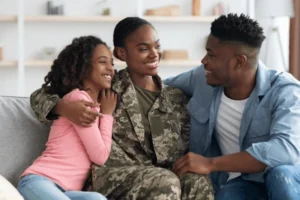What is Place-Based Education?
Parents, teachers, school leaders, and public policy makers have their hands full keeping up with the latest trends in education. It’s a complex process. First, creative thinkers propose new ideas for better serving our students. Second, teachers apply these theoretical models in the classroom. Third, school leaders learn about the success or failure of these new approaches from teachers. Next, they compare reports against class grades and standardized assessments. Finally, parents hear from students about what’s going on in the classroom. And – when possible and appropriate – seek out new, alternative, or experimental schools for their children if the approach their current school offers fails to meet their needs.
In that way, feedback from parents, teachers, and school leaders trickles up to policy makers. They adapt the latest trends ito benefit the entire society through changes in system objectives, and enact them by reorganizing funding priorities. Changes over the past twenty years prove education in the United States is adaptable. Ideas once considered novel, such as student-directed curricula, differentiated instruction, and project-based learning, are now common. Even in public schools. What many people directly involved in the process may not know is that there’s a new approach. One that has the potential to integrate virtually every new and traditional approach into a seamless whole.
It’s called Place-Based Education.
A 21st Century Model for Total Integration
You don’t need a Ph.D. to understand what Place-Based Education (PBE) is. The name defines itself. It does help, however, to learn how the leaders of the movement define it. The Center for Place Based Education, operated by the public-private group Promise of Place, offers a good working definition:
“Place-based education (PBE) immerses students in local heritage, cultures, landscapes, opportunities and experiences, using these as a foundation for the study of language arts, mathematics, social studies, science and other subjects across the curriculum. PBE emphasizes learning through participation in service projects for the local school and/or community.”
PBE creates chances for educators to connect students to their immediate environment. The goal is to ground all aspects of learning in practical outcomes, real-world applications, and examples that have meaning. Not because a book, teacher, or expert explains that meaning, but because students can see that meaning with their own eyes.
News From The Field
A report published by Getting Smart further condenses the definition of PBE:
“Place-Based Education is anytime, anywhere learning that leverages the power of place, and not just the power of technology, to personalize learning.”
They identify the three basic ways PBE personalizes education. PBE has the power to:
- Give students agency in deciding what, where, when, and how they learn.
- Tailor education to the specific interests, needs, and strengths of each student.
- Promote academic rigor and mastery of core standards.
Elements of Place-Based Education
PBE also serves as a framework within which all the most recent trends in education can find a home:
- Experiential Learning stresses learning by doing. PBL places students in situations where they can fail, but have a great chance of success. The experience of failure and success drives home lessons for students in a way theoretical learning cannot.
- Student-Centered Learning allows the interests and strengths of students to direct the way teachers approach various subjects. Creative teachers ensnare student impulses. They capitalize on the natural desire to learn and craft those instincts to enhance engagement an improve student performance.
- Deep Learning is the objective of every teacher, educational program, and educational theory ever designed. It’s learning that sticks, because It creates understanding rather than knowledge. Also, it helps prepare students for applying lessons from the classroom to the world-at-large.
- Service Learning is a sub-type of experiential learning. Students engage in work that helps a community by collaborating with its members. They determine a specific community need, then engage with community members to meet that need. Direct contact across cultural, language, and economic boundaries helps students understand not only the communities and cultures they encounter but lends them insight on their home communities and personal backgrounds, as well.
- Project-Based Learning challenges students to solve real-world tasks and answer practical questions through small, medium, and large assignments. Students generally perform projects in small groups. Project-based learning often connects students to the community through partnerships with businesses, universities, or visiting professors. These connections help students understand how theoretical knowledge manifests in life beyond the classroom walls.
- Social & Emotional Learning is the process by which students learn the skills to navigate and process their feelings, develop empathy for others, and establish positive relationship habits. It helps students communicate with others about all topics, but especially those that aren’t generally covered in traditional book learning. Social/emotional learning is the everything else students need to learn, since it helps them understand themselves and the people they interact with in school, work, family, and social situations.
- Work-Based Learning is the ultimate practical learning tool. Once called vocational education, or Vo-Tech, work-based learning allows students to gain knowledge by seeing how people do things in the workforce.
A Unifying Framework
Place-Based Education is the perfect context for educators to combine all the approaches described above with standard methods of teaching. It’s easy to see how the anytime, anywhere concept applies, because teachers and students need only look out the window and walk out into the world to realize the power of PBE. Firstly, schools in rural areas can use location to apply ideas from agricultural and environmental science. Secondly, schools in urban areas can apply ideas from economics and engineering. Thirdly, schools in suburban areas can liaise with all types of businesses to enhance learning. And all that’s just a drop in the enormous bucket of potential offered by the PBE paradigm.
Why Now? The Importance of Place-Based Education Today
The tech revolution of the late 20th and early 21st centuries defines our current cultural moment. We live in The Information Age. It’s a time when it’s possible to access knowledge and interact instantly with people on the other side of the planet. It’s never been easier to expand our educational boundaries. That’s the essence of the anytime, anywhere idea. But the authors of the article, “What is Place-Based Education and Why Does it Matter?” make a critical point. Anytime, anywhere frequently means anytime and anywhere you can get a wi-fi signal.
Real World Learning
In contrast, place-Based education asks teachers, school leaders, and public policy-makers to take students out of the classroom and into the world. Not the virtual world. Not the world of Skype, Facetime, and Snapchat. But the actual world, right there, waiting for us every day. We’ll end with a quote from Nate McClennen, Vice-President for Education and Innovation at Teton Science Schools:
“Imagine a world with Place-Based Education for every child — connecting learning locally, regionally, and ultimately, globally. With multiple opportunities to interact with professionals, design solutions to real challenges, and skills to understand the world through multiple lenses, these students are the citizens the world needs for tomorrow.






























































